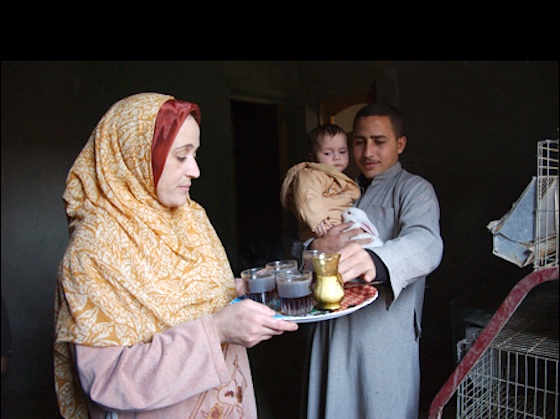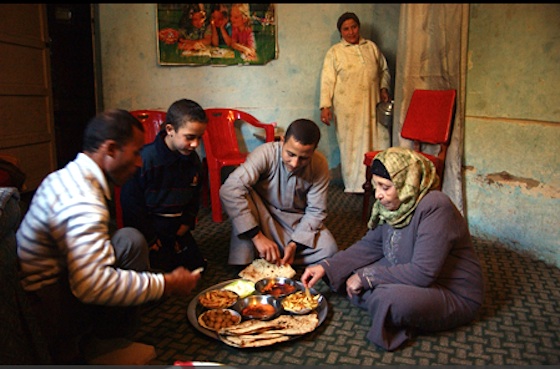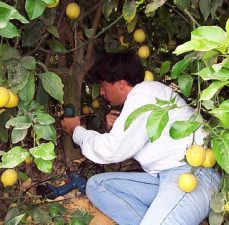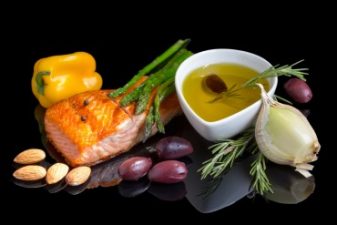Waeel Abdessalam breeds rabbits on the third floor of his family home in El-Hamidiyah el-Gadida, a small village in the Fayoum area roughly 100 km southwest of Cairo. A beneficiary of the Food and Agriculture Organization of the United Nations’ TeleFood program, the young man tends to the rabbits early in the morning before leaving to study at a nearby technical school and in the evenings when he returns. Each rabbit sells for approximately $3.50 at the market and the meat and fur are respectively used to supplement the six-member family’s diet and income.
Wäel Abdessalam’s father first learned about the TeleFood program through his job as an agricultural specialist and encouraged his son to take on the task of rearing rabbits on the newly constructed third floor of their home. A budding Mechanical Engineer, Wäel took on the task just over a year ago, but it hasn’t always been easy.
The first litter of 14 rabbits had contracted a disease similar to chicken pox, which caused them to bleed from their mouths. A vet recommended culling the entire litter and Wäel had to start all over again.
Nonetheless, FAO representatives taught him how to build a battery and care for the animals, which are carefully nourished with select vitamins and fed food scraps from the table. Building one rabbit battery costs $115.
One male and three females can produce as many as 100 babies in a 10 month period and mortality rate is low. The hybrid New Zealand White and Egyptian Baladi V-line breed is particularly tolerant of heat, which can become overbearing in the region. Plus, they are kept in a small room, where lighting is controlled to ensure that the rabbits are comfortable.
Already, the FAO’s TeleFood project, which targets small, poor farmers throughout the planet, has not only enabled Wäel to pay for his school fees and buy tomatoes, potatoes and onions from the market, but he has even purchased a couple of goats and a sheep through the proceeds.
Also, though the student says he feels a bit bad about “eating his companions,” rabbit meat is used as a substitute for chicken in a special dish called mulukhiyeh that is prepared on special occasions such as Eid.
Nothing goes to waste. Wäel’s mother makes small carpets and fluffy tours out of the rabbit fur, as well as small decorative pom poms that are attached to clothing.
:: All images and story via FAO
More Micro-Farming Initiatives in Egypt:
eZra3 Remote Farming is Like Farmville but Real
What Urban Rooftop Farming Could do for the Middle East
Rooftop Hydroponic Urban Farms Scrub the Air and Uplift Urban Poor







vous n’êtes que des primitifs pas encore sortis de l’époque de Néandertal. Qui êtes-vous pour décider du droit de vie, de souffrance et de mort d’un autre être vivant ? le végétarisme vous est conseillés pour laver votre âme et votre corps. Vous puez la mort et vous subirez le même sort que ces innocentes créatures tellement plus belles que vous!
I’ve eaten rabbit – tastes like chicken. Try the Hasenpfeffer recepie: it takes 3 days to prepare (including the marination process) but it’s worth the effort.